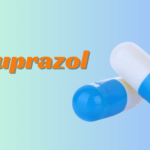A homeowner’s worst nightmare is water damage. The aftermath of a burst pipe, a leaky roof, a flood, or any other unforeseen event can be overwhelming. Aside from addressing the source of the water problem and making necessary repairs, you’ll frequently be faced with the daunting task of cleaning up and disposing of damaged belongings and materials. This is where a dumpster rental can be extremely useful. In this blog, we’ll look at the difficulties of cleaning up after a flood, the advantages of renting a dumpster, and how it can help you manage the cleanup more effectively.
The Difficulties of Water Damage Cleanup
Water damage can devastate your home, and the cleanup process is rarely simple. Here are some of the most common issues you may face when cleaning up after water damage:
1. Waterlogged Personal Effects
Water-soaked furniture, carpets, clothing, and personal items may need to be removed and disposed of. This can be emotionally draining, especially if sentimental items are involved.
2. Building Materials That Have Been Damaged
Water can wreak havoc on building materials such as drywall, insulation, flooring, and structural components. It is often necessary to remove and replace these materials in order to prevent further damage and mold growth.
3. Mildew and Mold Growth
Mold and mildew thrive in an ideal environment created by water damage. It is critical to remove affected materials as soon as possible to prevent mold from spreading and posing health risks to occupants.
4. Dangerous Materials
Water damage may expose hazardous materials such as asbestos or lead-based paint in some cases. To protect the health and safety of those involved in the cleanup, proper handling and disposal of these materials is critical.
5. Large Debris Volumes
The cleanup process produces a significant amount of debris, which includes damaged materials, personal items, and furniture. Finding an effective way to manage and dispose of this debris can be difficult.
The Advantages of Water Damage Cleanup Dumpster Rentals
When it comes to managing the cleanup process after water damage, dumpster rental Greenville can be a game changer. Here are some of the main advantages:
1. Efficient Waste Management
Dumpster rentals offer a centralized and efficient way to dispose of damaged materials, debris, and personal belongings. You can easily deposit waste into the dumpster as you work instead of making multiple trips to a landfill or recycling center.
2. Organization and Containment
A dumpster aids in the containment and organization of the cleanup process. You can prevent clutter and ensure a safer and more organized work environment by designating a location for waste and damaged items.
3. Ease of Use
Dealing with water damage can be stressful enough; a dumpster rental makes the cleanup process easier by providing a convenient and accessible disposal solution on your property.
4. Security
During cleanup, a cluttered and debris-filled environment poses safety risks. A dumpster contains hazardous materials and debris, lowering the risk of accidents and injuries.
5. Environmental Awareness
Environmental responsibility requires proper disposal of water-damaged materials. Renting a dumpster facilitates waste segregation and disposal by separating recyclables and ensuring that hazardous materials are handled in accordance with regulations.
6. Cost-Cutting Measures
When compared to making multiple trips to a waste disposal facility, renting a dumpster can save you money and time. It also reduces the possibility of damaging your vehicle while transporting heavy or sharp debris.
Materials Appropriate for Dumpster Rentals Following Water Damage
Dumpster rentals are appropriate for disposing of a variety of materials and debris generated during water damage cleanup, such as:
1. Furniture Damage
Water-damaged furniture, such as sofas, chairs, and mattresses, can be disposed of in a dumpster. Certain materials may be recyclable or repurposed.
2. Damp Carpeting and Flooring
Carpets, rugs, and flooring materials that have become saturated can be disposed of in a dumpster. It is critical to properly dispose of these materials in order to prevent mold growth and further damage.
3. Drywall and Insulation
Water-damaged drywall and insulation should be removed and disposed of properly to avoid mold and structural damage. These materials can be disposed of in dumpsters.
4. Personal Effects
Personal items, clothing, electronics, and appliances that have been damaged can be disposed of in a dumpster. Before disposing of items, it is critical to photograph them for insurance claims.
5. Construction Materials
Water damage may necessitate the removal of structural components such as beams and framing, as well as roofing materials such as shingles. These materials can be disposed of in dumpsters.
6. Dangerous Materials
When hazardous materials, such as asbestos or lead-based paint, are discovered during cleanup, special handling and disposal are required to comply with environmental regulations.
Tips for a Stress-Free Dumpster Rental
Consider the following tips to ensure a smooth dumpster rental experience during water damage cleanup:
1. Calculate the Volume
Determine the appropriate dumpster size by estimating the volume of damaged materials and debris that must be disposed of. It is preferable to rent a slightly larger dumpster rather than risk overfilling a smaller one.
2. Make a Placement Plan
Plan where you’ll put the dumpster on your property, making sure it’s easily accessible for cleanup crews and doesn’t obstruct access to your home or other structures.
3. Priority is Given to Safety
Prioritize safety when cleaning up. Anyone handling water-damaged materials or debris should wear personal protective equipment (PPE).
4. Separate and Sort
Sort and separate materials as you go to efficiently manage waste. Separate recyclables from non-recyclables in one section of the dumpster.
5. Properly Dispose of Hazardous Materials
If hazardous materials are discovered during your water damage cleanup, make sure to follow all safety precautions and disposal regulations. If necessary, seek professional advice.
6. Arrange for Regular Dumpster Pickups
Schedule regular pickups and emptyings of the dumpster with the dumpster rental company. This ensures sufficient space for ongoing cleanup and prevents overflow.
7. Damage to Documents
Before disposing of damaged items, photograph them thoroughly for insurance claims.
Conclusion
Water damage cleanup can be a difficult and emotionally draining process. To ensure a safe and organized cleanup, dealing with damaged materials, belongings, and debris necessitates efficient waste management. Residential dumpster rentals provide a practical and convenient solution, allowing homeowners to dispose of materials efficiently while maintaining a clean work environment. Homeowners can navigate the cleanup process with confidence and reduce the stress of water damage recovery by following safety guidelines, accurately estimating waste volumes, and properly disposing of hazardous materials. For reliable residential dumpster rental services in your area, view the GVL Dumpsters’ website today.





